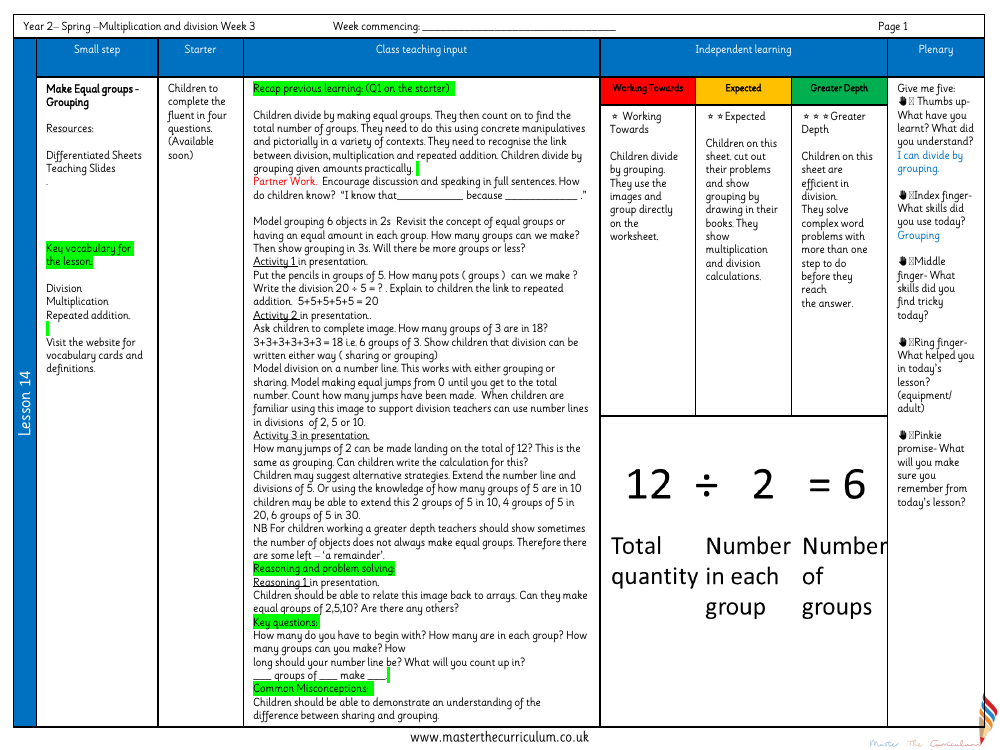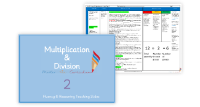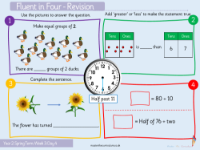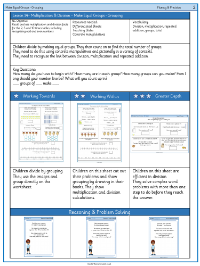Multiplication and division - Make equal groups grouping 2 - Planning

Maths Resource Description
In the Year 2 curriculum focusing on multiplication and division, Week 3 introduces students to the concept of making equal groups through grouping. This fundamental skill is taught using differentiated sheets and teaching slides, helping children to visualise and understand the process of division as the formation of equal groups. The lesson's key vocabulary includes 'division', 'multiplication', and 'repeated addition', with vocabulary cards and definitions available to support learning. The lesson begins with a recap of previous learning, where children are reminded that dividing involves creating equal groups and counting these to find the total number of groups. This is practiced using concrete manipulatives and pictorial representations, highlighting the connection between division, multiplication, and repeated addition.
During the class, students engage in partner work to encourage discussion and articulate their understanding. They explore grouping objects into equal sets, starting with simple examples like grouping 6 objects into pairs and then into threes, prompting discussions about the number of groups formed. The children are then presented with practical activities, such as grouping pencils into sets of five and relating this to division and repeated addition. Further activities involve using a number line to model division, making equal jumps to reach a total, and writing the corresponding calculations. As students progress, they are challenged with reasoning and problem-solving tasks, such as relating division to arrays and exploring grouping with different numbers. The lesson aims to ensure that children grasp the difference between sharing and grouping and can apply these skills to various problems, with additional support for those working towards greater depth by introducing the concept of remainders in division.



